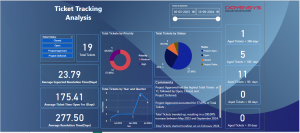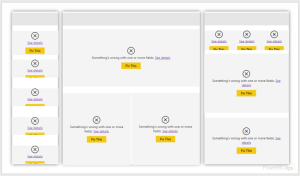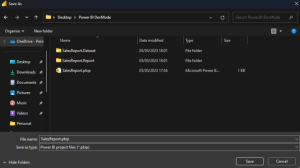Introduction/Issue
Understanding the different Power BI file types—PBIX, PBIT, and PBIP—can be confusing for users. This blog aims to clarify the distinctions between these file types and provide guidance on when and how to use each one effectively.
Why We Need to Do This / Cause of the Issue
Power BI offers various file types to cater to different needs in data analysis, reporting, and project management. However, users often face issues because they are unsure which file type to use in specific scenarios. This confusion can lead to inefficiencies, such as using the wrong file type for sharing reports or collaborating on projects, ultimately disrupting workflows and causing frustration.
How Do We Solve It
To address this issue, let’s explore the differences between PBIX, PBIT, and PBIP files and provide real-time examples of their usage:
PBIX Files
What They Are: PBIX files are the standard file format for Power BI Desktop reports. They contain the entire report, including data models, queries, visualizations, and the data itself.
Use Case: Suppose you have created a comprehensive sales report that includes all the data and visualizations. You want to share this complete report with your team. In this case, you would save and share the report as a PBIX file.
Example: You have a PBIX file named Ticket_Tracking.pbix that includes all sales data, charts, and tables. Sharing this file ensures that your team has access to the full report with all the data included.

PBIT Files
What They Are: PBIT files are Power BI template files. They contain the report structure, including layouts, measures, and visualizations, but do not include the actual data.
Use Case: Imagine you need to create a standard report template that can be reused across multiple projects. You want to share the report structure without exposing sensitive data. In this scenario, you would save the report as a PBIT file.
Example: You have designed a report template named Sales_Template.pbit that includes the layout and visualizations but no data. Sharing this template allows others to apply it to their datasets without compromising data privacy.

PBIP Files
What They Are: PBIP files are a new file format introduced for Power BI projects. They save report and semantic model item definitions as individual plain text files in a folder structure.
Use Case: Suppose you are working on a collaborative project with multiple developers. You need to track changes, collaborate efficiently, and integrate with source control systems like Git. In this case, you would use PBIP files.
Example: Your team is developing a complex report, and you save the project as a PBIP file named SalesReport.pbip. This allows team members to work on different parts of the project simultaneously and track changes using Git.

Conclusion
By understanding and utilizing the appropriate Power BI file types—PBIX, PBIT, and PBIP—you can enhance your reporting workflows, ensure data privacy, and improve collaboration. This approach not only streamlines your processes but also provides a seamless experience for users, ultimately leading to more efficient and effective data analysis and reporting.
